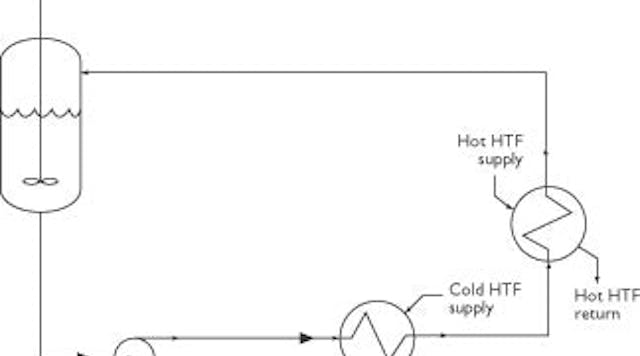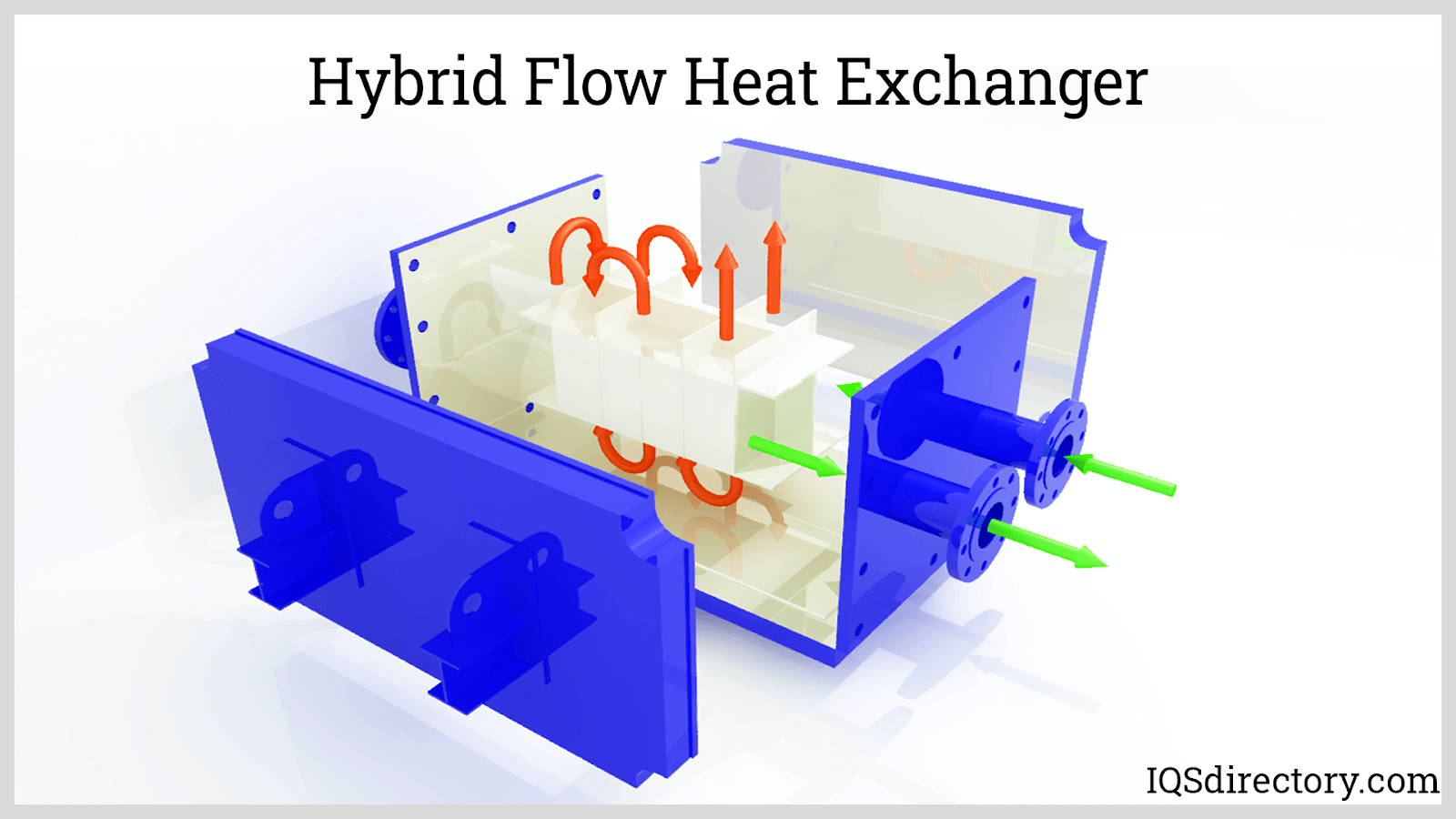Developments in Heat Transfer Solutions: What You Required to Know for Ideal Efficiency
Innovations in Heat transfer systems are transforming efficiency throughout various markets. Advanced materials like graphene and nanofluids guarantee substantial renovations in thermal conductivity. The assimilation of IoT and device learning offers opportunities for real-time tracking and boosted energy effectiveness. Nonetheless, the landscape of thermal management is rapidly developing (DVS Heat Transfer Systems). Comprehending these developments is necessary for accomplishing ideal system performance and sustainability in the future. What certain advancements are shaping this transformation?
Emerging Materials for Improved Heat Transfer

Advanced Heat Exchanger Layouts
While conventional Heat exchangers have offered their objective in different applications, advanced layouts are currently arising to satisfy the enhancing needs for effectiveness and performance. These innovative designs, such as plate, shell-and-tube, and finned-tube Heat exchangers, incorporate enhanced area and improved flow patterns to enhance thermal transfer rates. In enhancement, small layouts permit decreased area requirements without compromising performance. Advanced products, such as compounds and corrosion-resistant alloys, furthermore boost resilience and performance under extreme conditions. Simulation modern technologies and computational liquid dynamics are progressively utilized to fine-tune these layouts, guaranteeing peak Heat transfer characteristics. As sectors look for to reduce power intake and optimize outcome, the fostering of sophisticated Heat exchanger styles is pivotal in attaining these goals.
The Role of Nanotechnology in Heat Transfer
Nanotechnology plays a vital duty in improving thermal conductivity within Heat transfer systems. By controling materials at the nanoscale, researchers have attained substantial renovations in energy efficiency. These innovations not just enhance efficiency yet additionally add to even more sustainable energy solutions.
Enhanced Thermal Conductivity
Considerable advancements in thermal conductivity have emerged via the application of nanotechnology, reinventing Heat transfer systems throughout numerous sectors. By including nanoparticles into Heat transfer liquids and materials, scientists have attained exceptional boosts in thermal conductivity. These nanoparticles, such as carbon nanotubes, graphene, and steel oxides, boost the Heat transfer buildings because of their high area and one-of-a-kind thermal characteristics. The resulting compounds show enhanced performance in applications varying from electronic devices cooling down systems to eco-friendly power modern technologies. The capability to tailor the dimension, form, and make-up of nanoparticles enables for maximized thermal monitoring solutions. Because of this, nanotechnology proceeds to play a crucial function in the growth of extra reliable and efficient Heat transfer systems, leading the way for boosted commercial applications.
Energy Performance Improvements

Combination of IoT in Heat Transfer Solutions
The integration of IoT in Heat transfer systems introduces the application of smart sensors that boost operational efficiency. These sensing units allow real-time information surveillance, permitting for instant adjustments and optimizations. This technological advancement has the prospective to substantially boost performance and energy management in Heat go to this web-site transfer applications.
Smart Sensors Implementation
As Heat transfer systems progress, the integration of clever sensors via the Internet of Things (IoT) has emerged as a transformative method. These sensors make it possible for real-time tracking of stress, temperature, and circulation rates, enhancing system performance and reliability. By collecting and sending data, they help with proactive maintenance, minimizing the risk of system failings. In addition, clever sensing units contribute to energy cost savings by refining operational criteria based on ecological conditions. Their ability to assess trends and abnormalities enables notified decision-making, ensuring peak efficiency of Heat transfer systems. As sectors significantly embrace this modern technology, the application of clever sensors stands to reinvent exactly how Heat transfer systems are managed, paving the means for better sustainability and boosted efficiency results.
Real-Time Data Surveillance
Exactly how can real-time information checking enhance the efficiency of Heat transfer systems? By integrating Internet of Points (IoT) modern technology, Heat transfer systems can leverage constant information collection from smart sensing units. This real-time surveillance enables instant evaluation of stress, circulation, and temperature prices, allowing operators to recognize ineffectiveness without delay. Subsequently, adjustments can be made to enhance efficiency, decrease energy consumption, and prolong tools lifespan. In addition, anticipating upkeep can be carried out, reducing unanticipated downtime and expensive repair services. The ability to envision efficiency metrics via dashboards boosts decision-making, cultivating a positive method to system monitoring. Eventually, real-time information monitoring not only enhances functional efficiency however likewise adds to sustainability goals within commercial processes.
Power Effectiveness and Sustainability Trends
Power efficiency and sustainability patterns are reshaping the landscape of Heat transfer systems, driving technology and compliance throughout numerous sectors. Organizations are increasingly focusing on energy-efficient layouts to reduce operational prices and lessen environmental influences. The assimilation of eco-friendly energy resources is coming to be more prevalent, enabling Heat transfer systems to operate sustainably while fulfilling governing demands. In addition, improvements in products and technologies advertise reduced energy intake and improve overall efficiency. Lifecycle analyses are additionally getting traction, enabling business to examine the environmental influence of Heat transfer systems from production to disposal. This concentrate on sustainability not just supports company obligation but likewise positions organizations competitively in a market where customers progressively favor green options. Energy efficiency and sustainability stay critical considerations for future advancements in Heat transfer modern technology.
Innovations in Thermal Administration Solutions
While the need for efficient Heat transfer proceeds to climb, innovations in thermal monitoring services are emerging to deal with both efficiency and sustainability difficulties. Advanced materials, such as phase modification materials and nanofluids, are being created to enhance Heat transfer efficiency - DVS Heat Transfer Systems. These materials enhance thermal conductivity and permit for far better temperature law in various applications. In addition, technologies like active thermal control systems are gaining grip, allowing real-time changes to manage Heat flow properly. These systems add to energy savings and minimize the ecological impact of thermal procedures. In addition, the assimilation of IoT in thermal administration promotes surveillance and predictive upkeep, ensuring maximized performance and long life of Heat transfer systems. Overall, these technologies stand for considerable strides towards more lasting thermal monitoring practices
Future Instructions in Heat Transfer Modern Technology
Emerging advancements in thermal monitoring services indicate a promising future for Heat transfer innovation. Researchers are significantly concentrating on developing products with superior thermal conductivity and informative post boosted energy efficiency. Developments such as nanofluids, which contain put on hold nanoparticles, provide significant enhancements in Heat transfer performance. Furthermore, the integration of clever materials that adjust to varying temperature conditions is gaining grip, enabling even more effective and receptive systems. The surge of additive production strategies is also enabling the style of complex Heat exchanger geometries that optimize fluid flow. Additionally, the implementation of artificial intelligence formulas is anticipated to reinvent the optimization of Heat transfer systems, helping with anticipating upkeep and find performance enhancement. Collectively, these developments are poised to change the landscape of Heat transfer innovations in different markets.

Often Asked Inquiries

Just how Do I Select the Right Heat Transfer System for My Application?
Choosing the appropriate Heat transfer system involves examining application needs, consisting of temperature ranges, fluid residential or commercial properties, and efficiency requirements. Examining system kinds, maintenance factors to consider, and cost-effectiveness likewise plays an important function in making an informed choice.
What Are the Maintenance Demands for Advanced Heat Exchangers?
Maintenance demands for advanced Heat exchangers generally consist of normal examinations, keeping track of for leakages, cleaning of surface areas, and ensuring perfect circulation prices. Following supplier standards warranties efficient procedure and lengthens the devices's life expectancy.
How Do Environmental Variables Influence Heat Transfer Performance?
Environmental factors significantly influence Heat transfer effectiveness. Variations in humidity, temperature, and air flow impact thermal conductivity and convective Heat transfer, ultimately affecting system performance and demanding factor to consider during the style and procedure of Heat transfer systems.
What Security Specifications Relate To Heat Transfer Equipments?
Security standards for Heat transfer systems usually include standards from organizations such as ASME and ASTM. DVS Heat Transfer Systems. These criteria address materials, style, and functional practices to assure integrity, effectiveness, and defense against threats in numerous applications
Just How Can I Troubleshoot Common Heat Transfer System Issues?
Fixing typical Heat transfer system issues entails examining for leaks, ensuring proper fluid circulation, inspecting insulation honesty, and validating temperature level differentials. Recognizing these aspects can aid preserve system performance and protect against additional issues.
Nanotechnology plays a vital function in boosting thermal conductivity within Heat transfer systems. Substantial developments in thermal conductivity have arised through the application of nanotechnology, transforming Heat transfer systems across various markets. Advancements in thermal conductivity with nanotechnology have paved the method for amazing enhancements in power effectiveness within Heat transfer systems. Energy effectiveness and sustainability fads are improving the landscape of Heat transfer systems, driving innovation and compliance across various markets. The combination of IoT in thermal monitoring promotes tracking and predictive upkeep, ensuring optimized efficiency and long life of Heat transfer systems.